ARCH 307 Exam #2 Slide IDs
5.0(2)
5.0(2)
Card Sorting
1/24
Earn XP
Description and Tags
Study Analytics
Name | Mastery | Learn | Test | Matching | Spaced |
|---|
No study sessions yet.
25 Terms
1
New cards
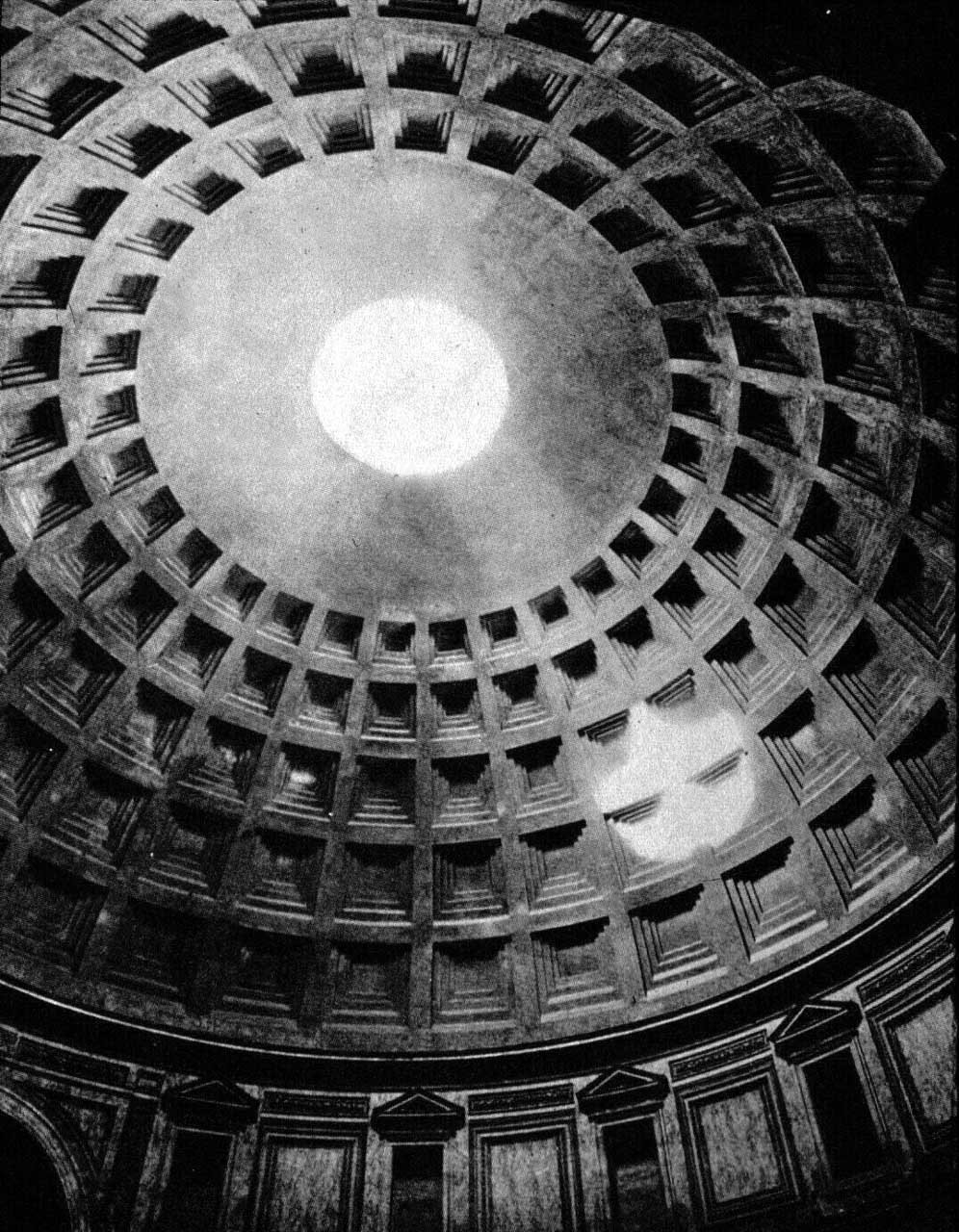
\- Pantheon’s Oculus
\- Rome
\- 118-125 CE
\- 8 m wide opening that allows sun in a circular shape to enter the interior
\- Built to position the sun’s light on significant dates and solstices
\- Part of the wider dome, made of coffering and increasingly light material like pumice
\- Rome
\- 118-125 CE
\- 8 m wide opening that allows sun in a circular shape to enter the interior
\- Built to position the sun’s light on significant dates and solstices
\- Part of the wider dome, made of coffering and increasingly light material like pumice
2
New cards
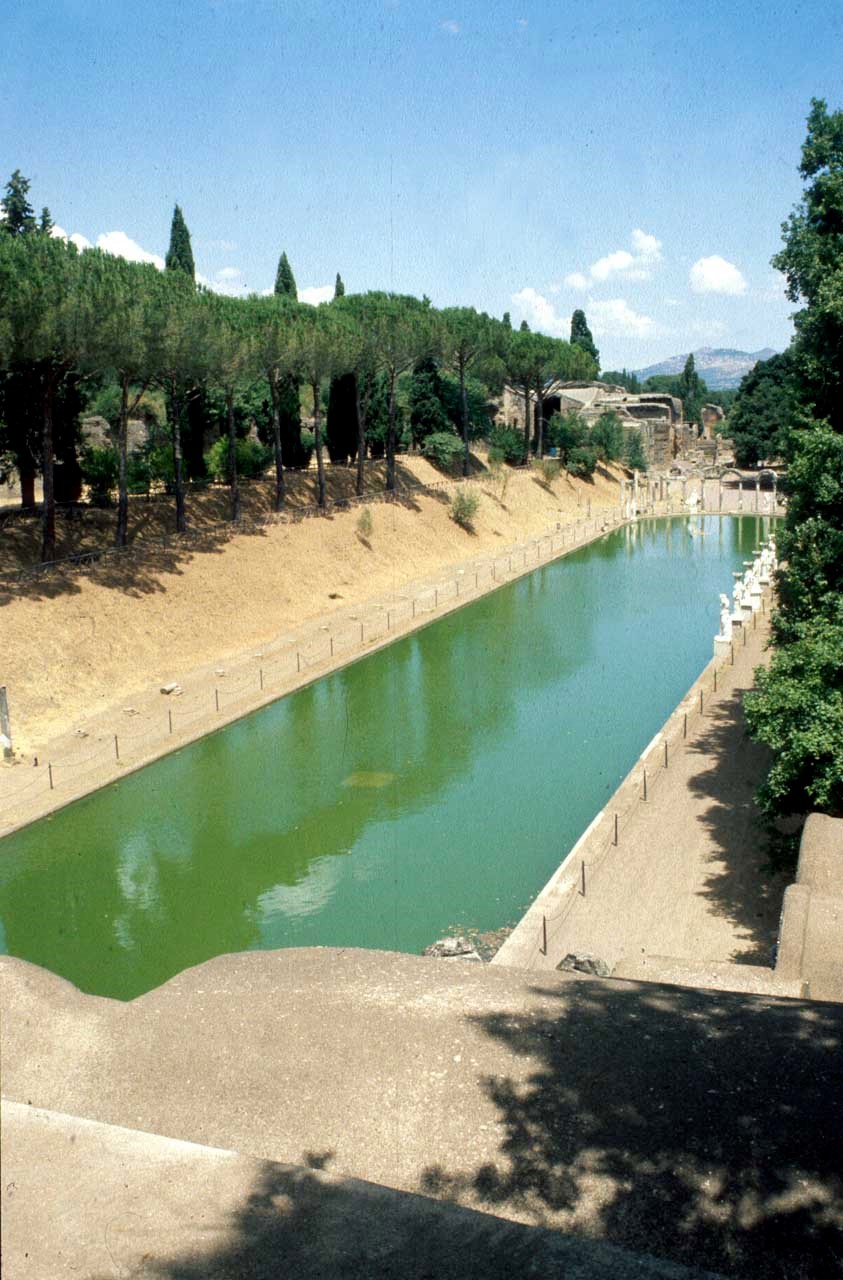
\- Canopus
\- Tivoli
\- 118-134 CE
\- Long rectangular reflection pond made to represent a canal from the Nile
\- Lined with statues of Greek myth
\- Contains the serapaeum on one end, a half-dome with a triclinium and waterfall feature
\- Example of Hadrian’s experimentation with architecture
\- Tivoli
\- 118-134 CE
\- Long rectangular reflection pond made to represent a canal from the Nile
\- Lined with statues of Greek myth
\- Contains the serapaeum on one end, a half-dome with a triclinium and waterfall feature
\- Example of Hadrian’s experimentation with architecture
3
New cards
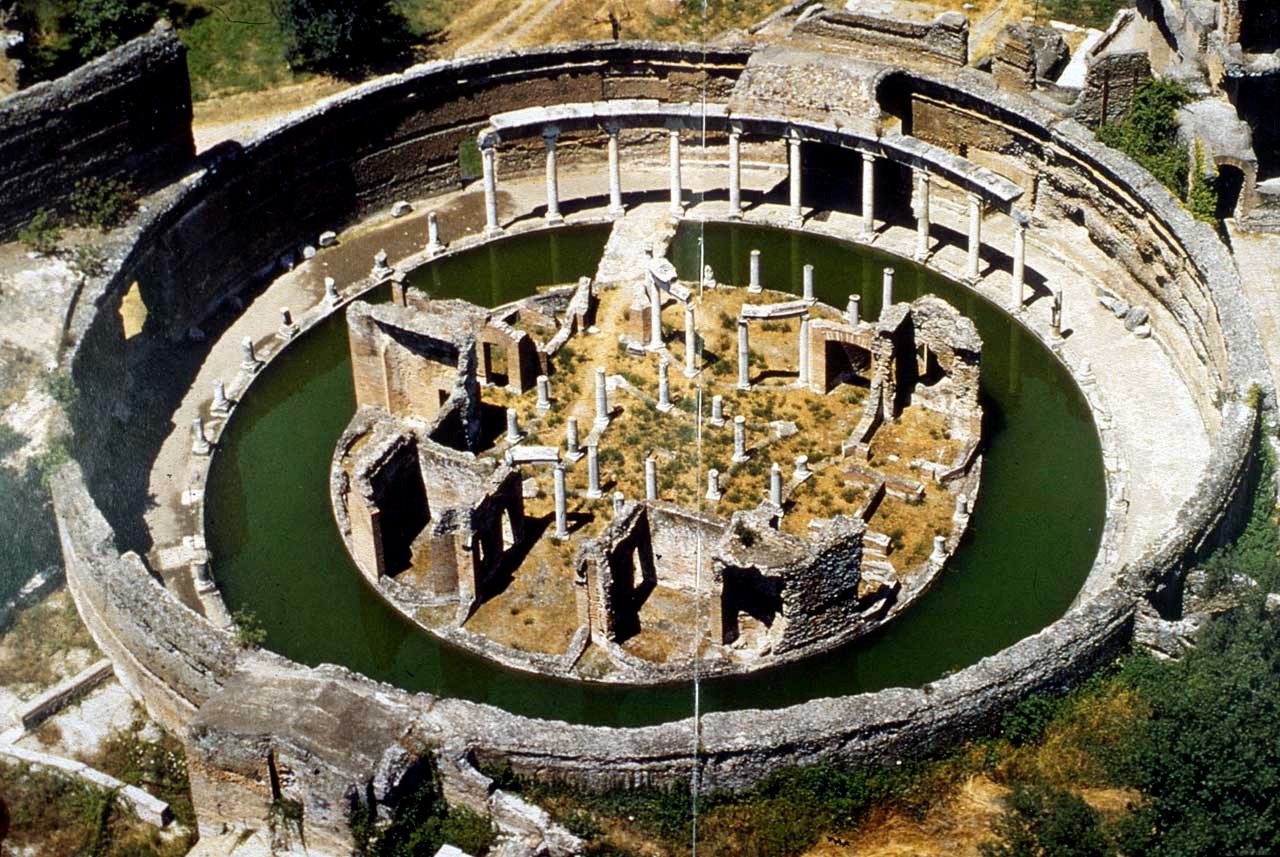
\- Island Villa
\- Tivoli
\- 118-134 CE
\- Small circular island with bedrooms, eating spaces, a library, and courtyard
\- Courtyard possibly inspired by Piazza d’Oro
\- Considered to be a success of Hadrian’s experimentation and an architectural marvel
\- Tivoli
\- 118-134 CE
\- Small circular island with bedrooms, eating spaces, a library, and courtyard
\- Courtyard possibly inspired by Piazza d’Oro
\- Considered to be a success of Hadrian’s experimentation and an architectural marvel
4
New cards
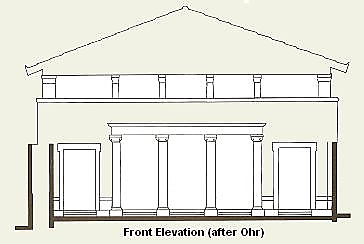
\- Basilica
\- Pompeii
\- 80-31 BCE
\- Constructed during the Sullan period after the Social War
\- Corinthian brick columns blocked the view of tribunals within the structure
\- Example of Romanization during the Roman Republic
\- Pompeii
\- 80-31 BCE
\- Constructed during the Sullan period after the Social War
\- Corinthian brick columns blocked the view of tribunals within the structure
\- Example of Romanization during the Roman Republic
5
New cards
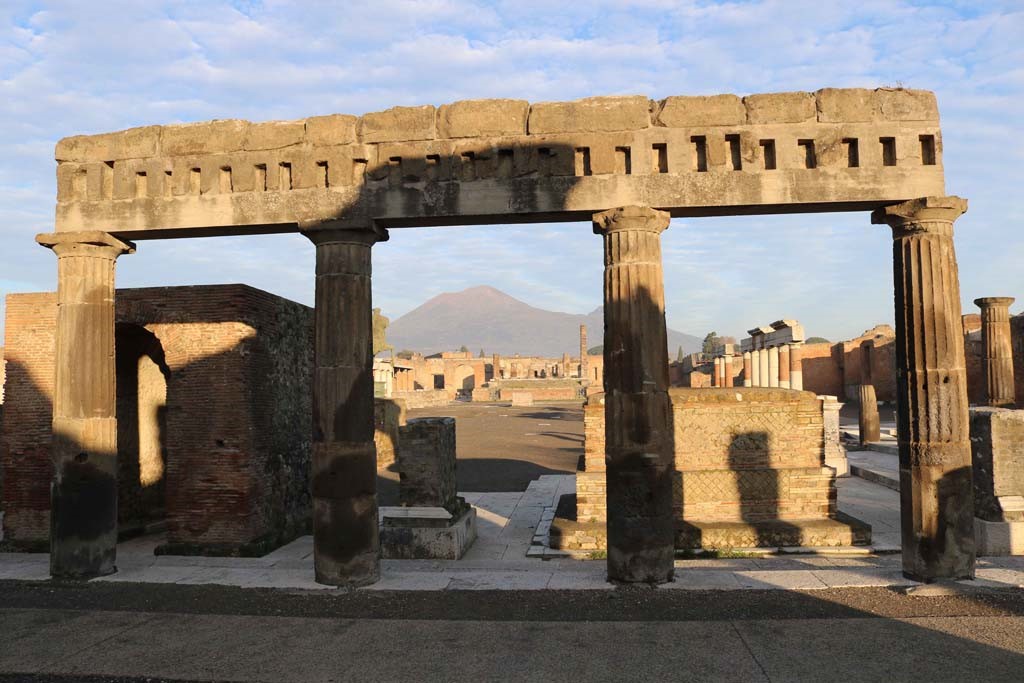
\- Colonnade
\- Pompeii
\- 80 BCE-68 CE
\- A rectangular colonnade around the forum oriented with the capitolium
\- First Republican phase left unfinished but later finished by the Augustan period
\- Arches next to the capitolium mimic the temple of Venus Genetrix
\- Pompeii
\- 80 BCE-68 CE
\- A rectangular colonnade around the forum oriented with the capitolium
\- First Republican phase left unfinished but later finished by the Augustan period
\- Arches next to the capitolium mimic the temple of Venus Genetrix
6
New cards

\- Antonine Warehouse
\- Ostia
\- circa 160 CE
\- Warehouse of singular rooms that stood along the street
\- A less secure but more effective system of storage from the previous horrea
\- One of the most common buildings in Ostia due to the amount of commerce in the city
\- Ostia
\- circa 160 CE
\- Warehouse of singular rooms that stood along the street
\- A less secure but more effective system of storage from the previous horrea
\- One of the most common buildings in Ostia due to the amount of commerce in the city
7
New cards
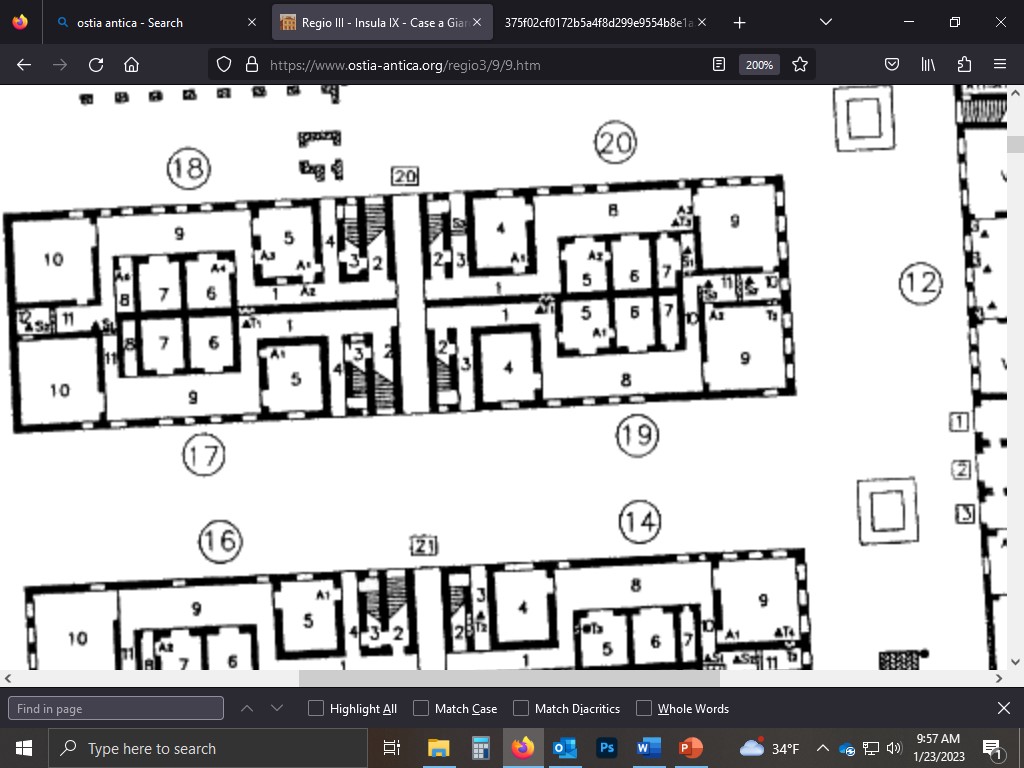
\- Garden House
\- Ostia
\- circa 128 CE
\- Multi-roomed apartments typically owned by harbor managers or high class individuals
\- Contained elaborate decoration like statues and cistern courtyards
\- Ostia
\- circa 128 CE
\- Multi-roomed apartments typically owned by harbor managers or high class individuals
\- Contained elaborate decoration like statues and cistern courtyards
8
New cards
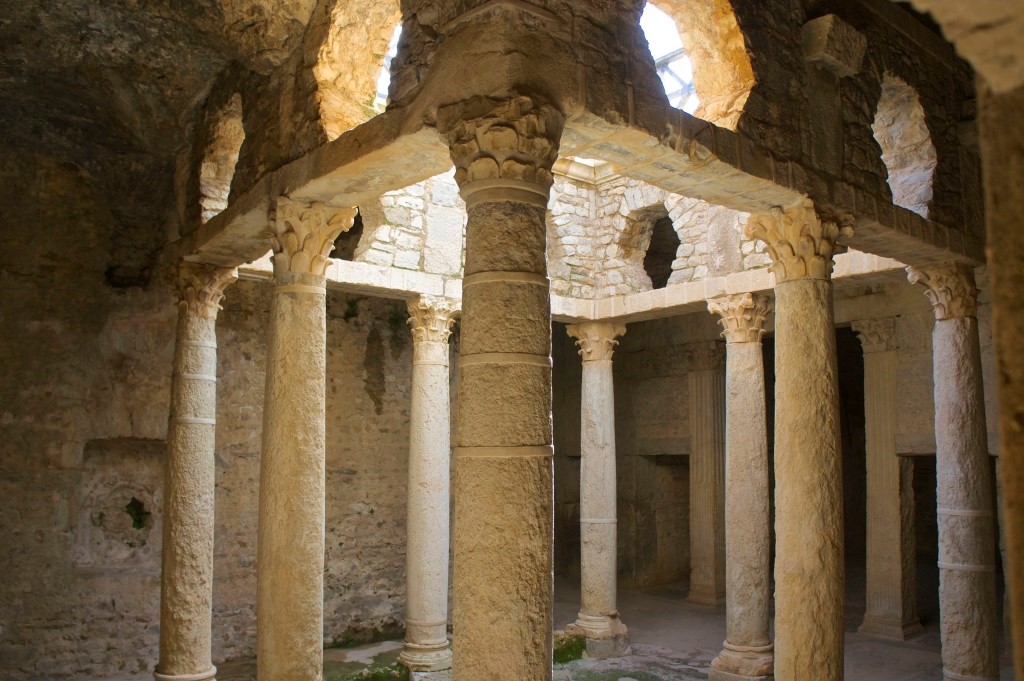
\- House of the Hunt
\- Bulla Regia
\- 2nd century CE
\- Roman style house with special adaptions to the environment
\- Second, private floor is located underground instead of the typical upstairs
\- Bulla Regia
\- 2nd century CE
\- Roman style house with special adaptions to the environment
\- Second, private floor is located underground instead of the typical upstairs
9
New cards
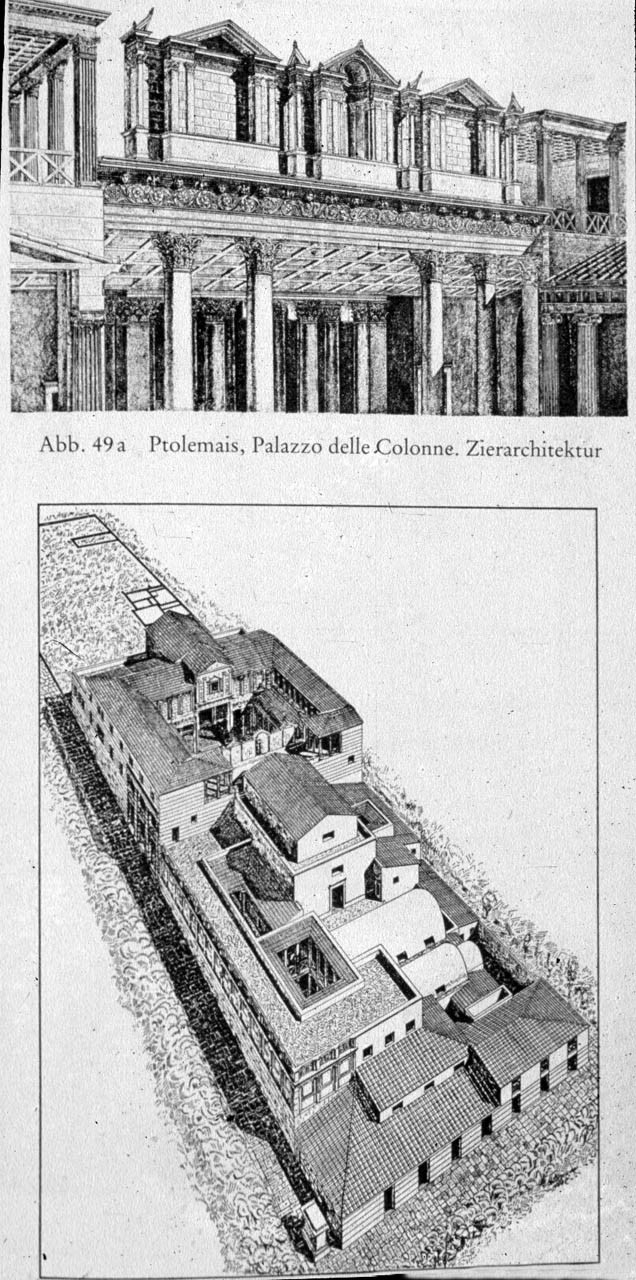
\- Palazzo delle Colonne
\- Ptolemais
\- late 2nd-1st century BCE
\- A Greek style peristyle house with top heavy pediment decorations above the courtyard’s colonnade
\- First known example of the “broken pediment” architecture, a popular decoration that spreads throughout Rome
\- Ptolemais
\- late 2nd-1st century BCE
\- A Greek style peristyle house with top heavy pediment decorations above the courtyard’s colonnade
\- First known example of the “broken pediment” architecture, a popular decoration that spreads throughout Rome
10
New cards
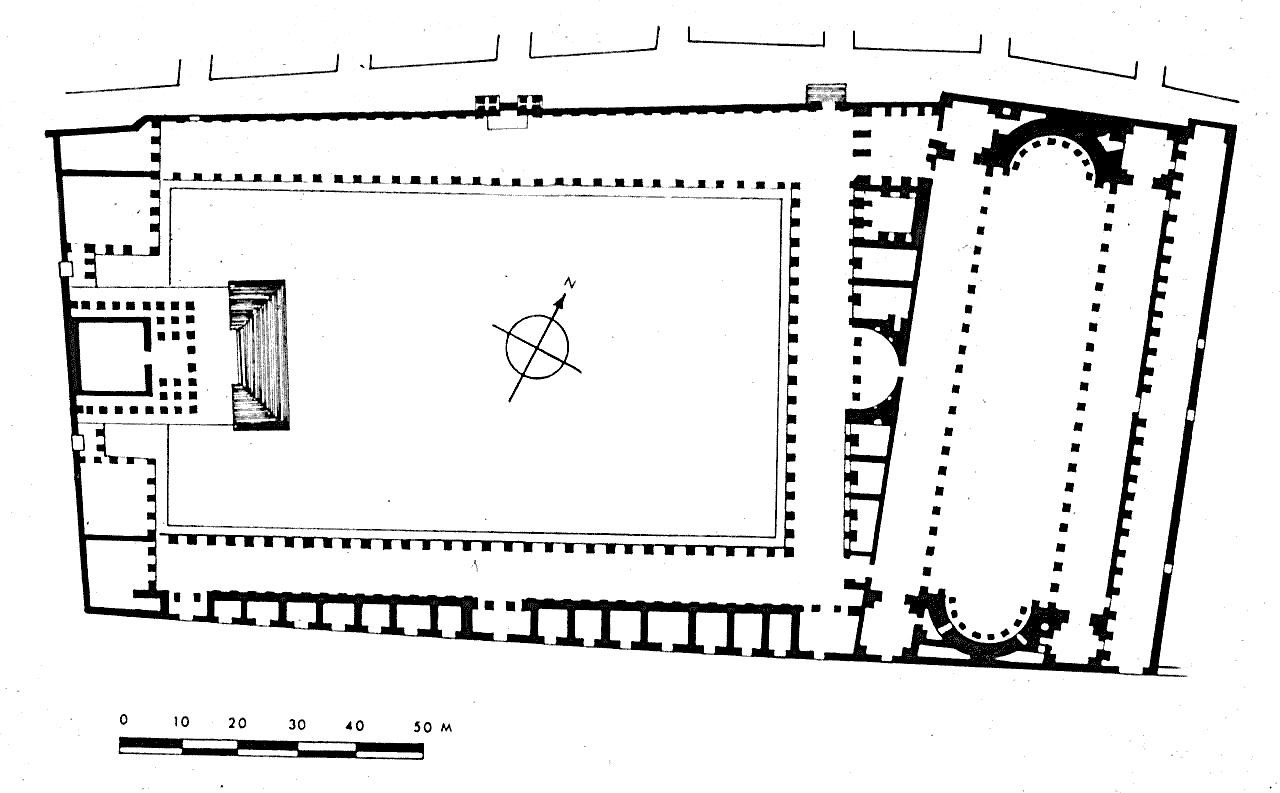
\- Severan Forum
\- Leptis Magna
\- 216 CE
\- Massive forum with a crooked basilica due to terrain
\- Contains a typical Roman temple except for the architecturally Punic stairway entrance
\- Leptis Magna
\- 216 CE
\- Massive forum with a crooked basilica due to terrain
\- Contains a typical Roman temple except for the architecturally Punic stairway entrance
11
New cards
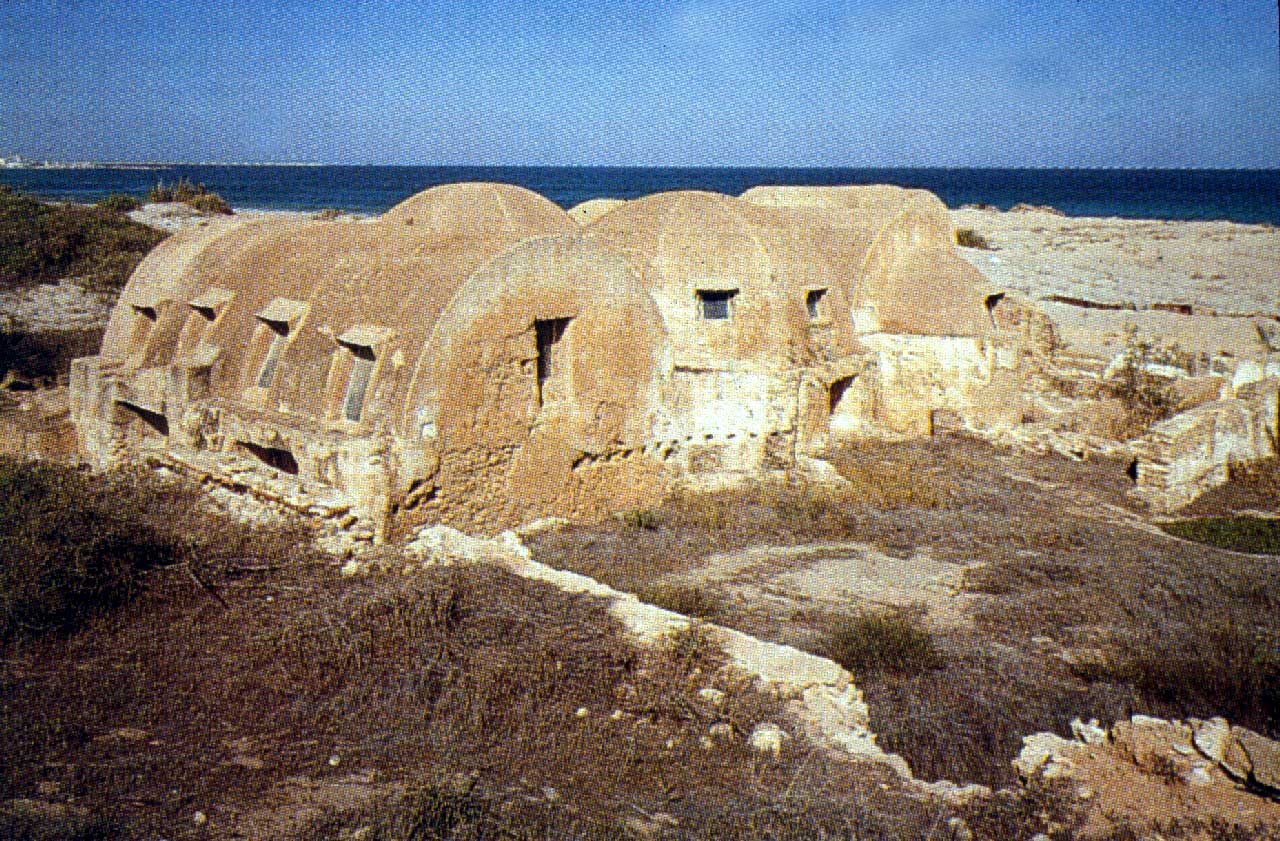
\
\- Hunting Baths
\- Leptis Magna
\- late 2nd century CE
\- Baths purposely made to look ugly to encourage entering the structure
\- Example of well preserved domed structures
\- Leptis Magna
\- late 2nd century CE
\- Baths purposely made to look ugly to encourage entering the structure
\- Example of well preserved domed structures
12
New cards
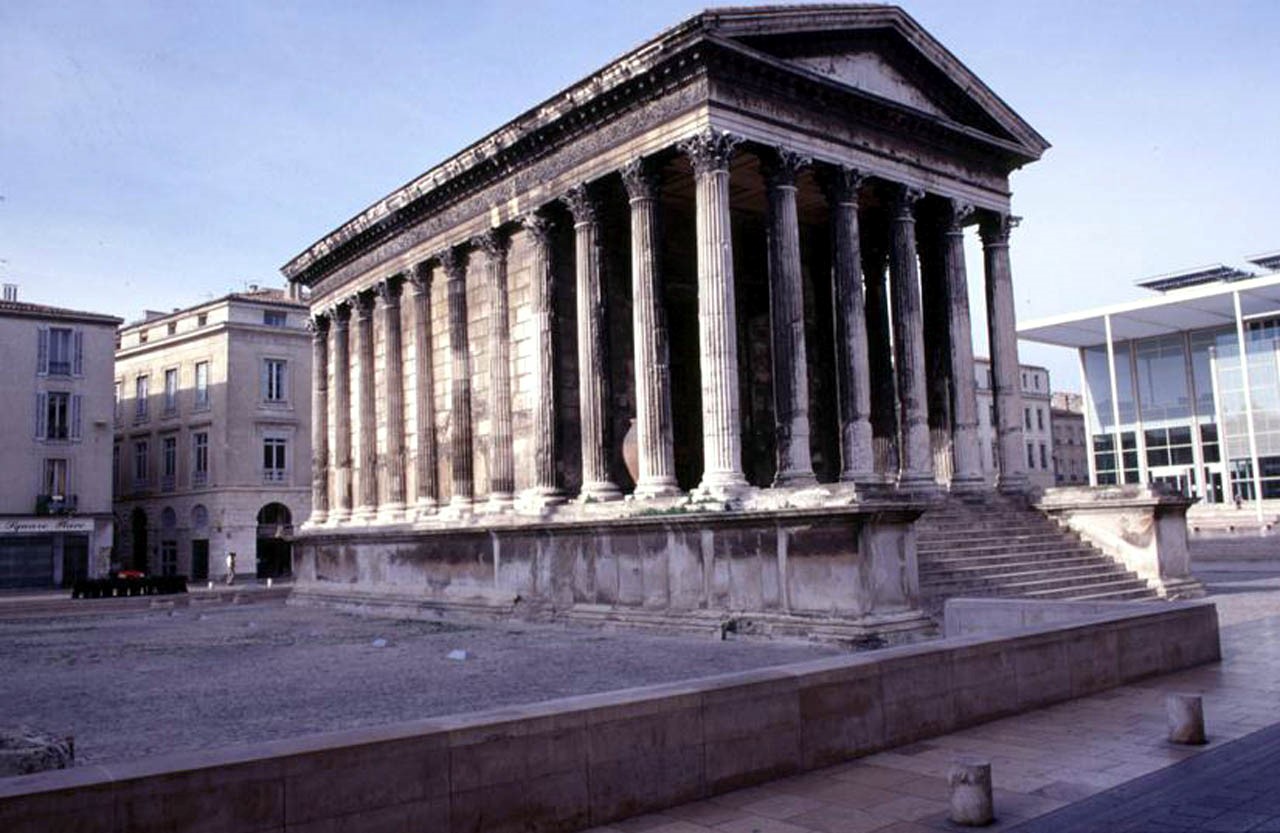
\- Maison Carree
\- Nimes
\- 19 BCE
\- A “perfect” Roman temple with correct proportions
\- Example of thorough Romanization in southern France
\- Nimes
\- 19 BCE
\- A “perfect” Roman temple with correct proportions
\- Example of thorough Romanization in southern France
13
New cards
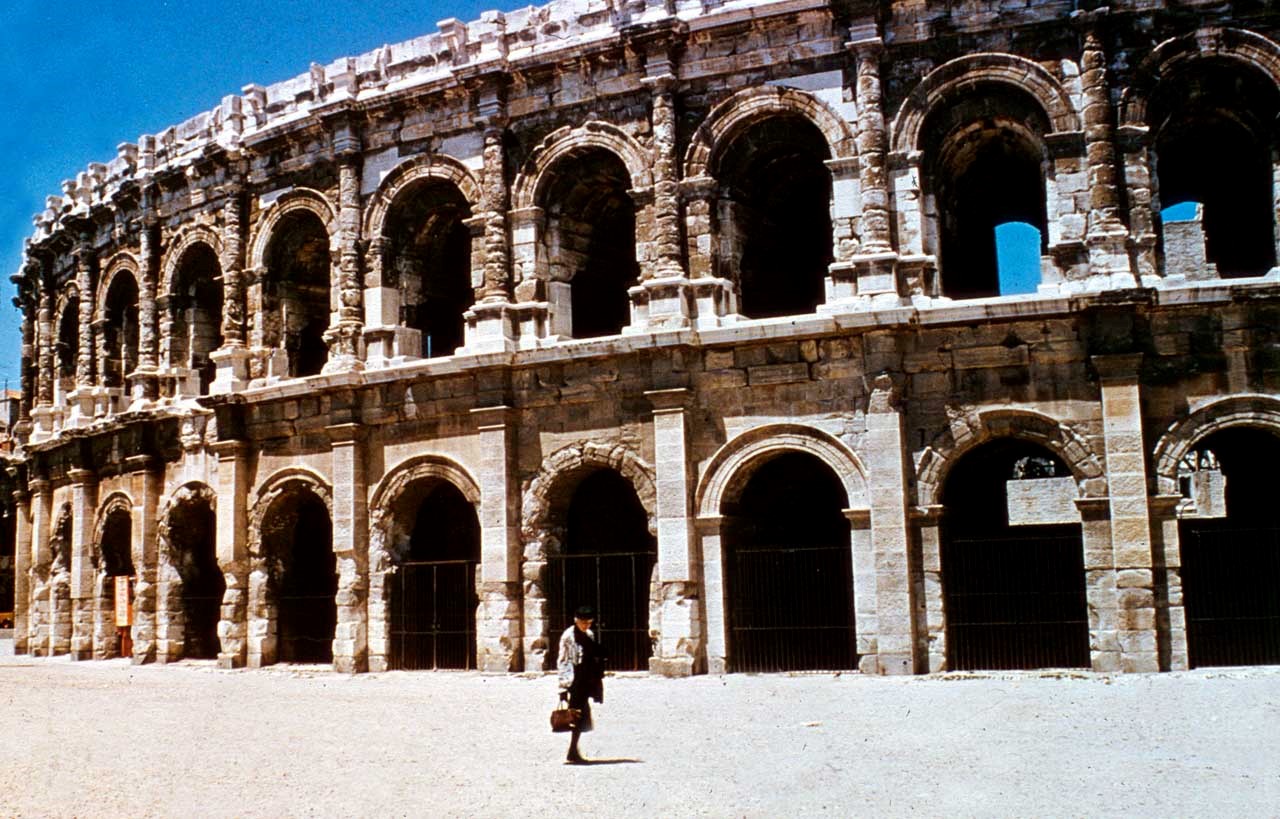
\- Nimes Amphitheater
\- France
\- late 1st century CE
\- Constructed Romano-Celt Tiberius Crispius Reburrus
\- Amphitheater built identically to a nearby amphitheater at Arles
\- Example of Romano-Celts building Roman architecture
\- France
\- late 1st century CE
\- Constructed Romano-Celt Tiberius Crispius Reburrus
\- Amphitheater built identically to a nearby amphitheater at Arles
\- Example of Romano-Celts building Roman architecture
14
New cards
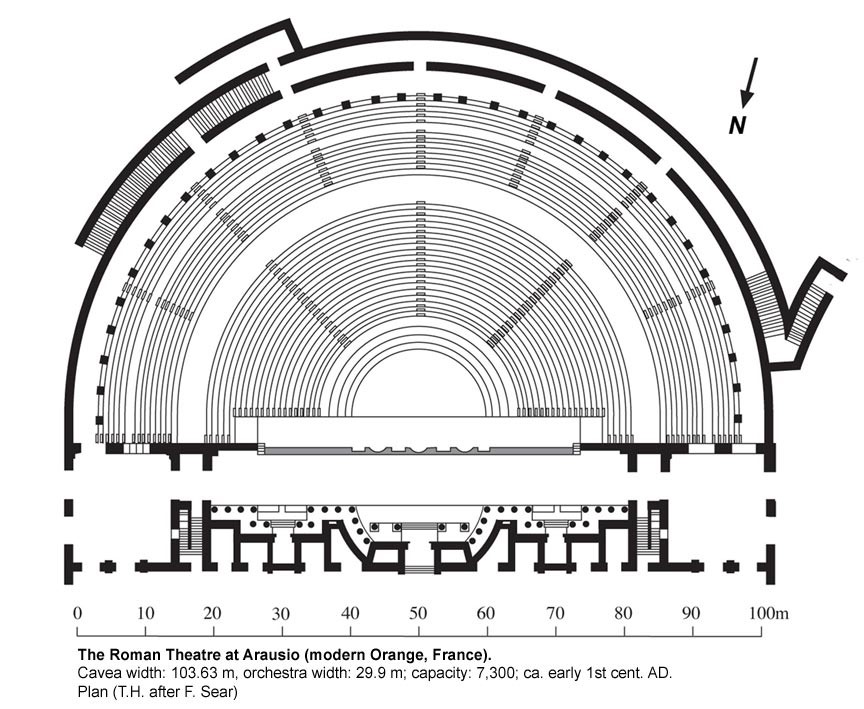
\- Orange Theater
\- France
\- early 1st century CE
\- One of the best preserved theater in all of the Roman Empire (including stage and orchestra)
\- Covered in a marble veneer
\- Contains evidence of velarium brackets
\- France
\- early 1st century CE
\- One of the best preserved theater in all of the Roman Empire (including stage and orchestra)
\- Covered in a marble veneer
\- Contains evidence of velarium brackets
15
New cards
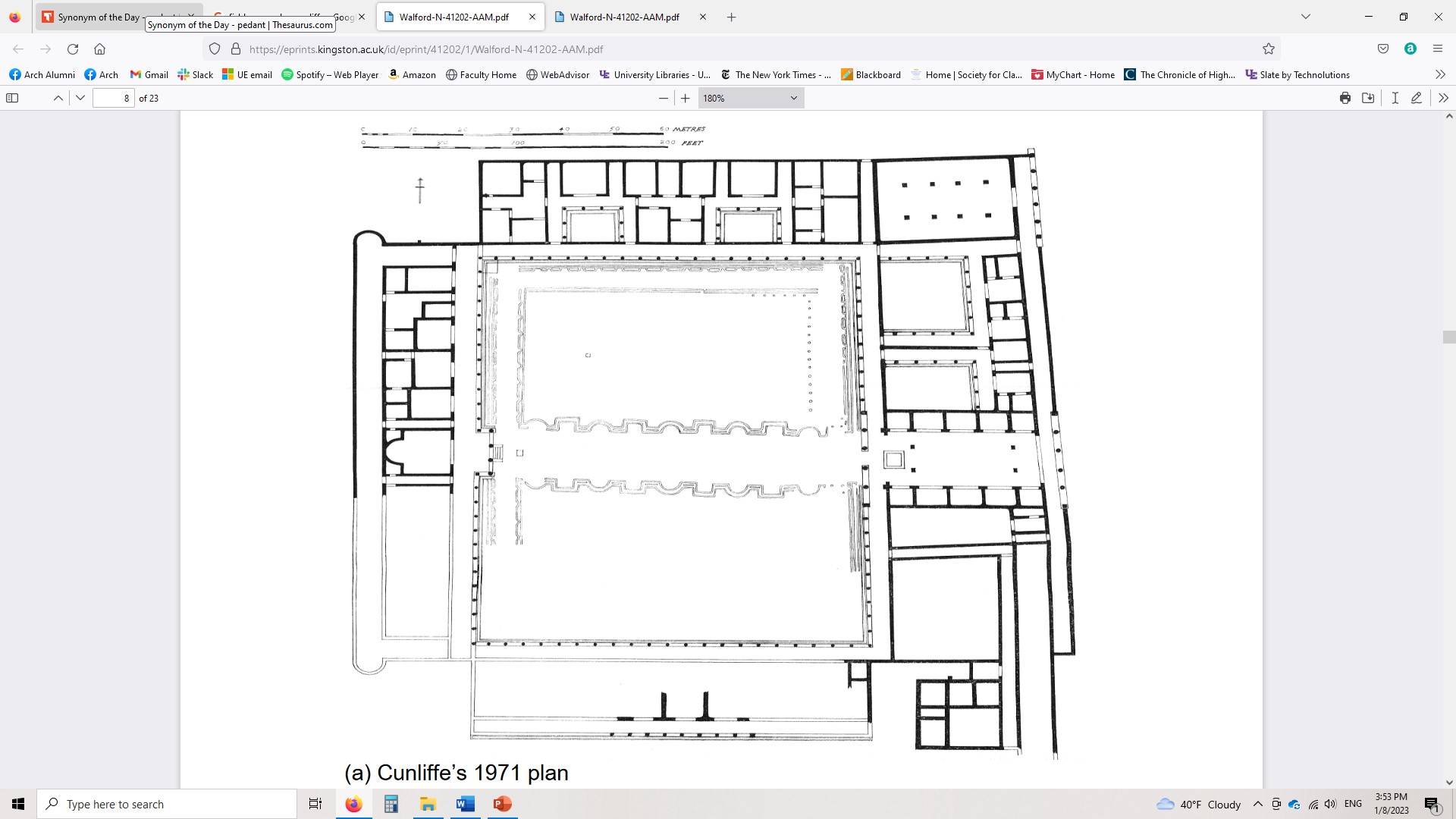
\- Villa at Fishbourne
\- England
\- 75 CE
\- Largest Roman villa in Britain constructed for client-king Togidubnus
\- Strictly Roman design in a very cold climate
\- Example of Romanization in Celtic culture
\- England
\- 75 CE
\- Largest Roman villa in Britain constructed for client-king Togidubnus
\- Strictly Roman design in a very cold climate
\- Example of Romanization in Celtic culture
16
New cards

\- Temple of Jupiter Heliopolitanus
\- Baalbek
\- 250 CE
\- Largest sanctuary in the entire Roman Empire
\- Contains a propylon, hexagonal forecourt, colonnade courtyard, and a temple to Jupiter Capitolinus
\- Propylon and colonnade use Roman and Near-Eastern architecture associated with local god Ba’al
\- Propylon columns are not equally distanced
\- Baalbek
\- 250 CE
\- Largest sanctuary in the entire Roman Empire
\- Contains a propylon, hexagonal forecourt, colonnade courtyard, and a temple to Jupiter Capitolinus
\- Propylon and colonnade use Roman and Near-Eastern architecture associated with local god Ba’al
\- Propylon columns are not equally distanced
17
New cards
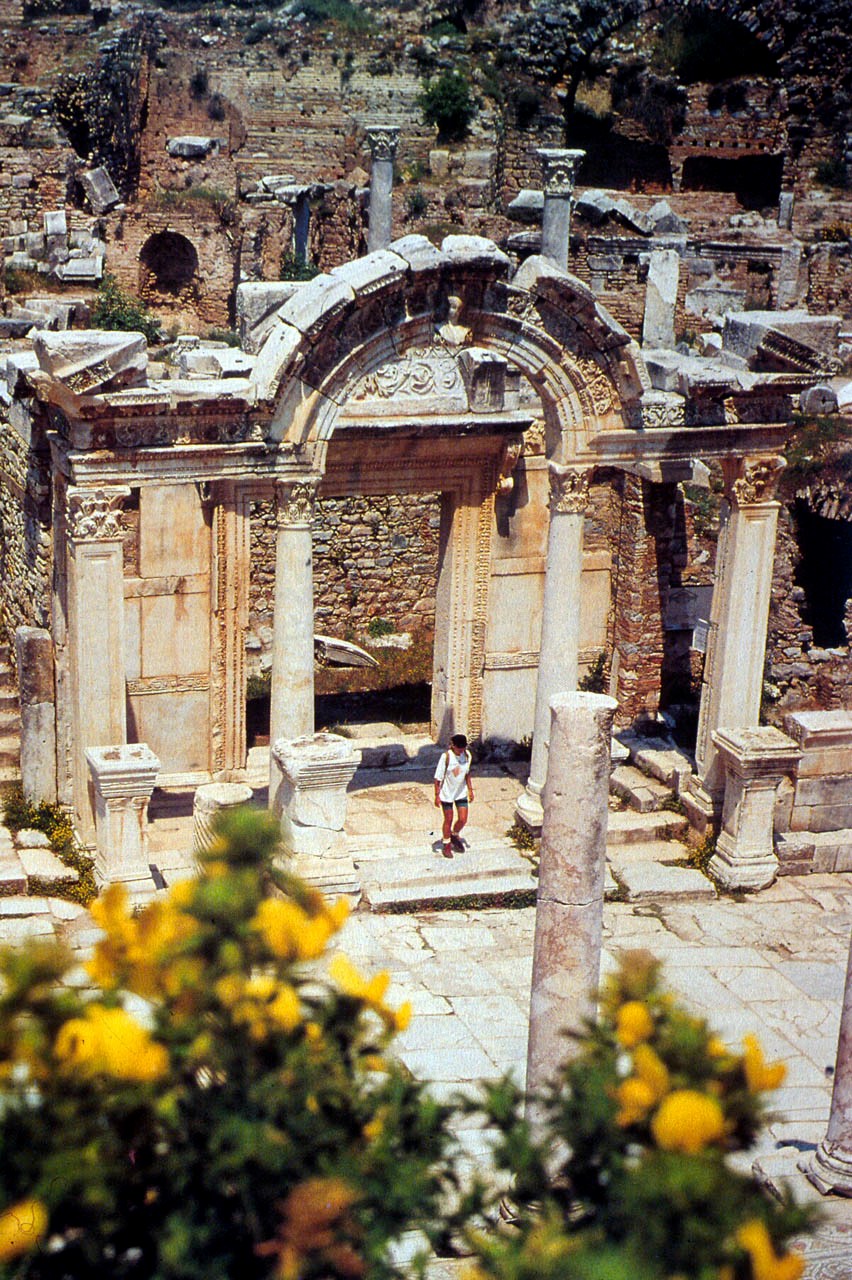
\- Temple of Hadrian
\- Ephesos
\- Mid 2nd century CE
\- Contains widely spaced columns with Syrian arch
\- Syrian arch appears as a border decoration when angled correctly
\- Example of Roman architecture using provincial architecture
\- Ephesos
\- Mid 2nd century CE
\- Contains widely spaced columns with Syrian arch
\- Syrian arch appears as a border decoration when angled correctly
\- Example of Roman architecture using provincial architecture
18
New cards
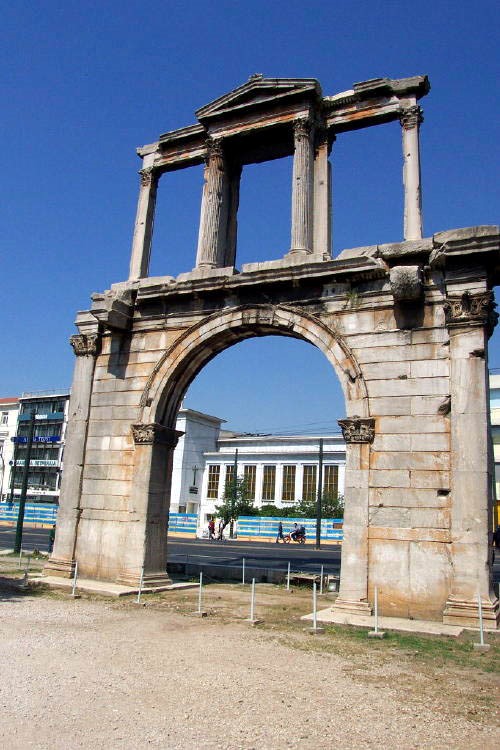
\- Arch of Hadrian
\- Athens
\- 138 CE
\- Boundary marker between old-town Athens and new-town Athens (constructed by Hadrian)
\- Uniquely thin arch with frescoes and baroque decoration atop
\- Doubles as imperial propaganda as people enter the newer part of the city
\- Athens
\- 138 CE
\- Boundary marker between old-town Athens and new-town Athens (constructed by Hadrian)
\- Uniquely thin arch with frescoes and baroque decoration atop
\- Doubles as imperial propaganda as people enter the newer part of the city
19
New cards
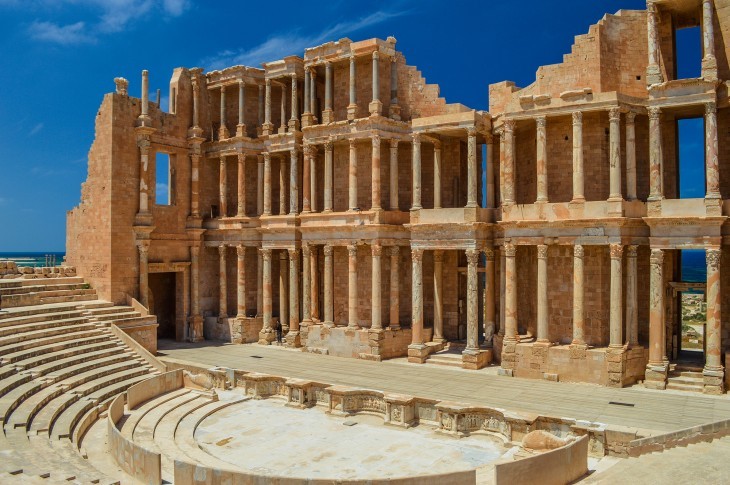
\- Theater at Sabratha
\- Libya
\- late 2nd century CE
\- Contains the best preserved scaenae frons in the Roman Empire
\- Backdrop included 3 entrances and 3 tiered columns, made to represent either
\- Libya
\- late 2nd century CE
\- Contains the best preserved scaenae frons in the Roman Empire
\- Backdrop included 3 entrances and 3 tiered columns, made to represent either
20
New cards
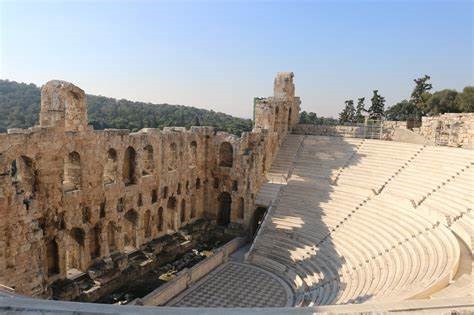
\- Odeum of Herodes
\- Athens
\- 160 CE
\- A Roman roofed theater
\- Most well-known odeum with extremely tall scaenae frons
\- Athens
\- 160 CE
\- A Roman roofed theater
\- Most well-known odeum with extremely tall scaenae frons
21
New cards

\- Circus at Leptis Magna
\- Libya
\- 2nd century CE
\- Large flat structure used for chariot racing and triumphal processions
\- Best preserved Roman circus
\- Central spina is purposely crooked to assist charioteers turn
\- Libya
\- 2nd century CE
\- Large flat structure used for chariot racing and triumphal processions
\- Best preserved Roman circus
\- Central spina is purposely crooked to assist charioteers turn
22
New cards
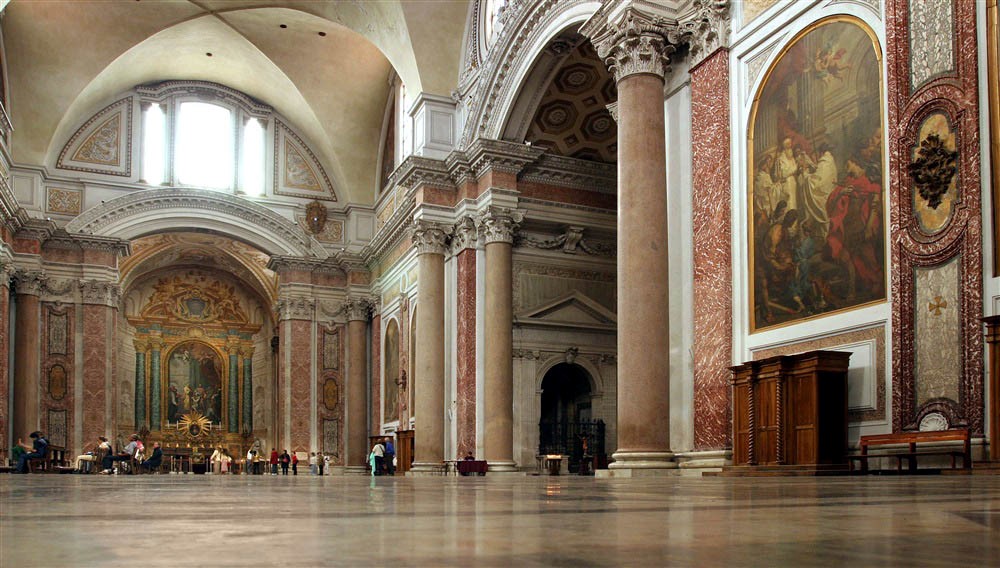
\- Baths of Diocletian
\- Rome
\- 298-306 CE
\- Largest baths at the time of its construction
\- Frigidarium is the only surviving section of the bath (now a church)
\- Immensely tall, open, and bright due to groin vaults
\- Pool’s facade similar to a theater’s scaenae frons
\- Rome
\- 298-306 CE
\- Largest baths at the time of its construction
\- Frigidarium is the only surviving section of the bath (now a church)
\- Immensely tall, open, and bright due to groin vaults
\- Pool’s facade similar to a theater’s scaenae frons
23
New cards
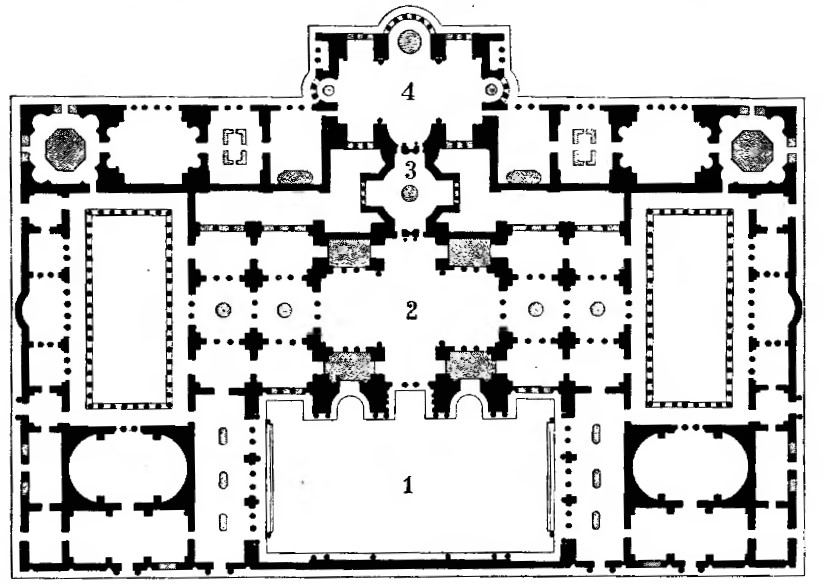
\- Baths of Diocletian Plan
\- Rome
\- 298-306 CE
\- Largest baths at the time of its construction
\- Frigidarium is the only surviving section of the bath (now a church)
\- Immensely tall, open, and bright due to groin vaults
\- Pool’s facade similar to a theater’s scaenae frons
\- Rome
\- 298-306 CE
\- Largest baths at the time of its construction
\- Frigidarium is the only surviving section of the bath (now a church)
\- Immensely tall, open, and bright due to groin vaults
\- Pool’s facade similar to a theater’s scaenae frons
24
New cards
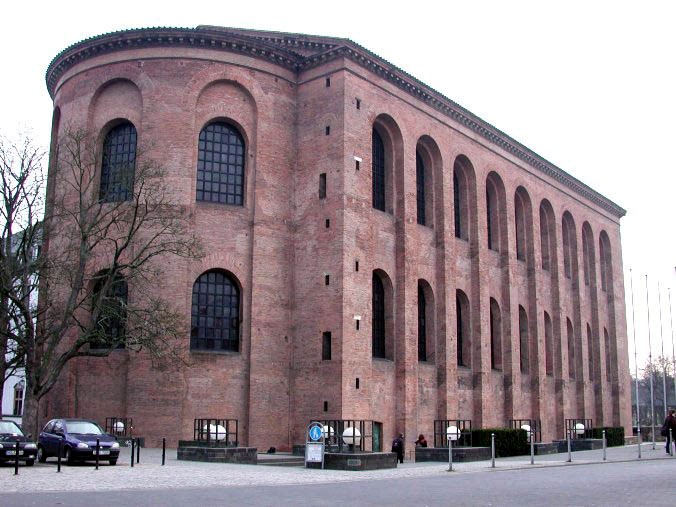
\- Basilica at Trier
\- Germany
\- early 4th century CE
\- Imperial building used to emphasize the presence of the emperor
\- Contained now destroyed wooden beams that held up a second floor
\- Germany
\- early 4th century CE
\- Imperial building used to emphasize the presence of the emperor
\- Contained now destroyed wooden beams that held up a second floor
25
New cards
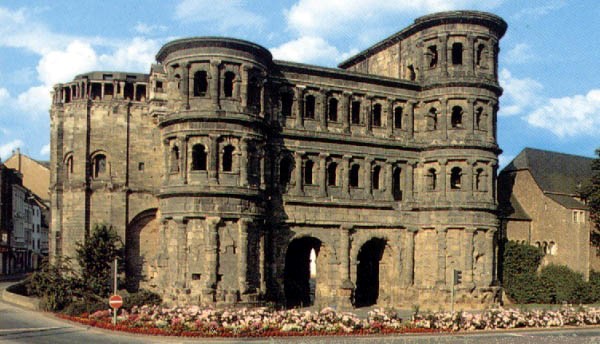
\- Porta Nigra
\- Trier
\- early 4th century CE
\- Unfinished black gate with an intended 4 floors, although only one section has 4
\- Inscription claims the 3rd floor was built in 3 weeks
\- Well preserved due to being a church and home of a martyr
\- Trier
\- early 4th century CE
\- Unfinished black gate with an intended 4 floors, although only one section has 4
\- Inscription claims the 3rd floor was built in 3 weeks
\- Well preserved due to being a church and home of a martyr